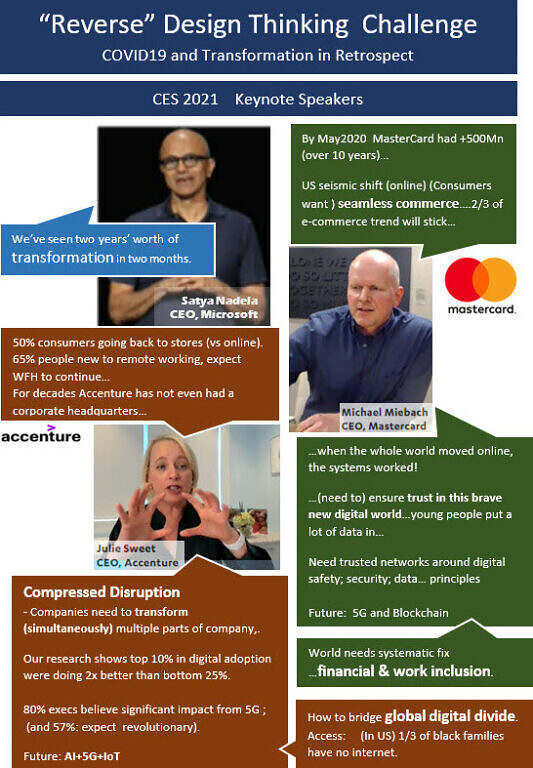Structures Are Not Flows (Part 5 of 8)
Previously published in LinkedIn 2019SEP06
Part 5/8 of Transformation Flows, Flaws, and Fails
- It’s not just semantics, it’s a mindset: Transformation seeks an endpoint; Transforming is a stream. One is a sprint; the other is crosscountry. – Breathe; pace; see.
- Your anxiety is real, personal, and for a reason: yes, the exec’s decision-making authority shifts to the experts and frontlines. It’s not a structure; not a net; but a flow.
- The essential disparity in dynamics: Agile: Teams- to explore, prototype, learn. Portfolio: Central- to plan, align, fulfill. You: Convergence- how, where, when?
“I’ve proven we can force an organization into an outcomes-focus, to pull the rest of the string to fast, spectacular outcomes. But that said…?” I grimace, “I’ve proven, too, that the resulting mismatched impedance can be enormous. And the costs: unsustainable and irretrievably personal.
“Schematics can seem so neat and logical, can’t they?”
- Transformation is not transforming. We can build a dam or a pond for containment. But a digitized world is fluid, changing, and not to be contained. We should rather harness the currents. For that, we build flues, or the river stream inevitably floods over and past us.
- Structures and streams. Likewise, we commonly think of organizations as a hierarchic structure with discrete, clear-cut blocks of authority, and with communications for mortar: a geometry as old and as solid as the pyramids.
- Finally, the angst is practical and personal. As the river floods its banks and laps at the pyramid base, agile teams are dispatched to buffer. The organizational hierarchy flattens. Execs feel their decision-making authority transferring to experts and frontline artisans.
“The mortar that held the blocks, has turned to liquid. Its duplex flow is loosening and destabilizing the structure. The sand is washing from underneath. This is the exponentiality we unleashed.
Looking at project and performance management information systems
“When I took the innovation helm at a leading tech company, there still was no viable enterprise tool to align and mesh agile workflows with the central column of performance gates.
“Classic MS Project type tools were of course developed for known and definable situations. Like bridge construction. Its fundamentally convergent frame has an enduring appeal to our need for plan and control.
“The 80’s tools added graphic overviews such as flowcharts. Dashboards gave numeric and icon snapshots”
Rex snorts, “I don’t know how, but my team always seems to have one or two guys with talent for making inconvenient greys disappear into five-word bulletpoints.”
Bledge, shaking his head, adds, ” Quanta or numerics are worshipped almost to a superstition, yet they can be like low-res, very pixelated snapshots. Why the fine gradients of grays are still preferred for X-rays. Qualia, as scientists call qualitative aspects are more appropriate for really new, or “yet to be defined” situations – which is the domain of exploratory or adaptive work. “
I nod. “Actually,” I say, “in the late 80’s, a tool called ManagePro introduced an Update functionality for attaching free-text threads, along with any docs, to any project line item. But amazingly, many think verbal updates are more noise than signal.
“Agile “tools” emerged in the 90’s: Wikis for knowledge stores; flat net platforms for creative collaboration. A tool for the actual work process has to match agile triple-tasking: to learn what’s new; decide new builds needed; deliver the builds back to the organization. These tools, naturally, were architectured for separate, small teams – with perhaps a few next-layers-up of integration.
The millenium: “Then the social and collaborative 2000’s gave us flattened platforms like customer-centric Salesforce. And for good or bad – multiple channels of emails and SMS.”
Rex mutters almost unintelligibly, “And we could learn asynchonicity better. Meetings! How on earth do I spend 10 hours in meetings, of what’s supposed to be an 8 hour workday? ”
“Tell me about it!” I agreed.
“We realized we’d have to build our own tool. Its logic, we’d premise simply on convergence and delivery. The gamble – can the approach deliver quickly enough, before the loosened blocks crush it? Surely, I thought, letting the people build and own it… “
I start sketching on a napkin.







